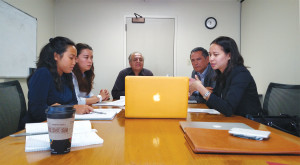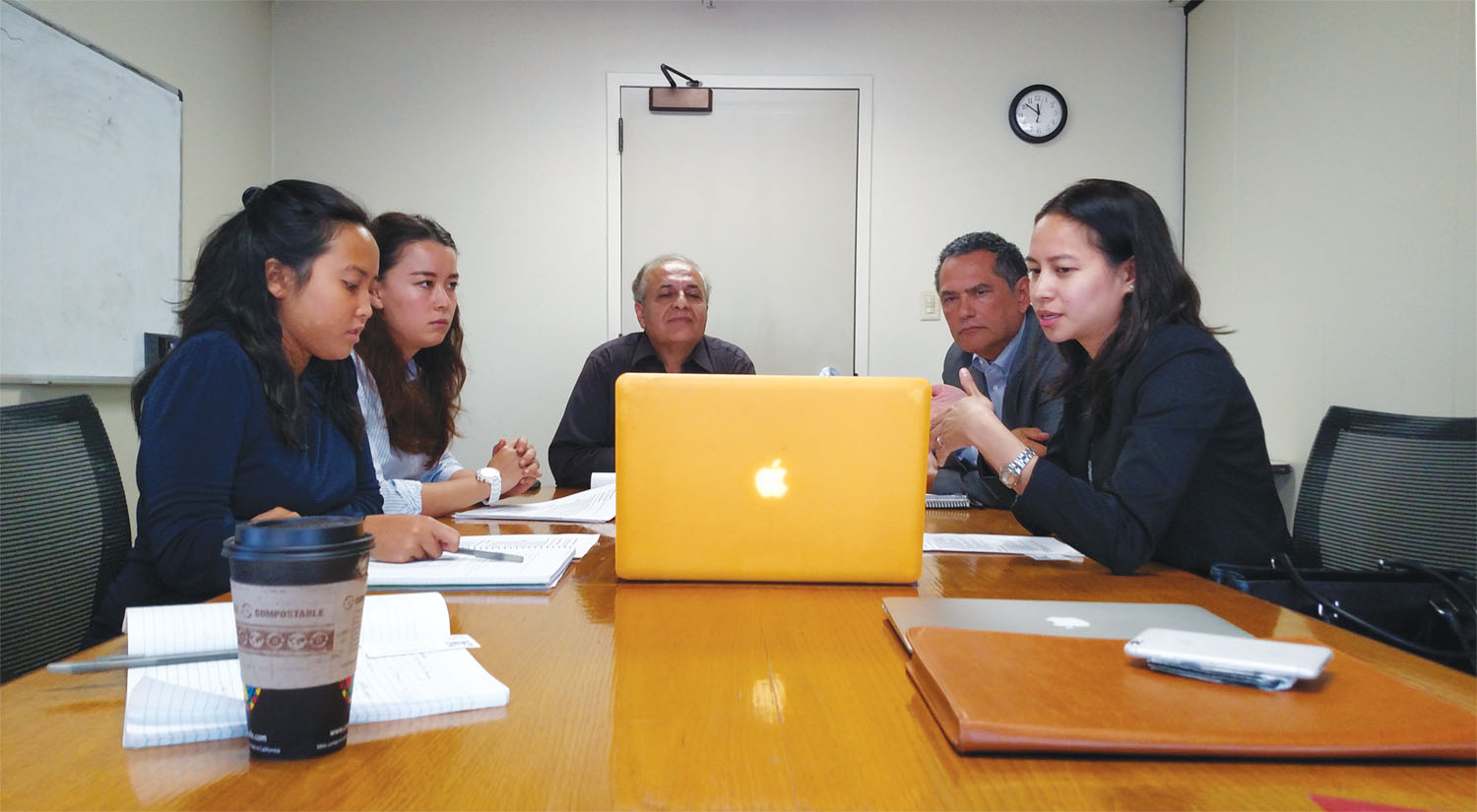
After a quarter-long collaboration between Stanford graduate students and city staff, East Palo Alto has become a founding member of Peninsula Clean Energy (PCE). This new non-profit seeks to provide San Mateo County residents with renewable energy at low cost.
Peninsula Clean Energy’s new “community choice energy” (CCE) program will take effect in August 2016. CCEs, also known as community choice aggregation, allow localities to combine their electricity demands and purchase energy directly from electricity providers. East Palo Alto’s electricity will continue to be distributed over existing lines by the current utility provider, Pacific Gas and Electric (PG&E), but PCE membership will allow the city to decide where to procure its electricity. It can also determine how much of its energy will be renewable. The local control granted by CCEs also allows localities to invest surplus funds in local clean energy projects.
East Palo Alto residents will be automatically enrolled in PCE but can choose to opt out. Other founding members include Atherton, Half Moon Bay, Menlo Park and San Mateo, with seven other Bay Area cities currently in the deliberation process.
The East Palo Alto City Council made the decision after recommendations from city manager Carlos Martinez and finance director Brenda Olwin who collaborated with a four-person team of Stanford first-year civil and environmental engineering graduate students to evaluate the costs and benefits of joining PCE. The team members, Lauren Shwisberg, Perry Simmons, Terra Weeks and Tha Zin, began their research in the first weeks of fall quarter. Their project was one of several that arose from the Energy Transformation Collaborative (ENVRES 201), a project-based course supported by Stanford’s Precourt Institute for Energy.
The Energy Transformation Collaborative splits the class into project teams, each focused on one broad area of energy policy (water use, electricity, buildings and transportation). This year, former U.S. Assistant Energy Secretary for Energy Efficiency and Renewable Energy Andy Karsner joined consulting professor Stefan Heck and teaching assistant Rob Best ’16 in teaching the course.
Rather than embarking on a three-quarter intensive research experience, students in the autumn course worked directly with East Palo Alto city staff to address the city’s numerous and pressing energy concerns.
“The question becomes, ‘How do we help some of the most disenfranchised communities in the country who are also facing big resource challenges?’” said Best, explaining the aims of the course.
Carlos Martinez, East Palo Alto’s city manager, came to Stanford early in the quarter with a list of local policy questions. Shwisberg, Simmons, Weeks and Zin, the four members of the electricity-focused research team, soon settled on CCE membership as one of their recommendations.
“We were interested in the idea, and then we found out that there was a CCE organization actually forming in San Mateo County,” Simmons said.
City staff were unsure about the potential impact of PCE on East Palo Alto residents. In particular, Martinez and Olwin were concerned that CCE membership could drive up costs for low-income residents. Under current policy, PG&E bills residents for energy generation, transmission and distribution. Low-income households receive discounts on energy transmission and distribution through the California Alternate Rates for Energy (CARE) program. PCE is able to offer slightly reduced energy rates because of its nonprofit status and introduction of competition into the local energy market, but Martinez and Olwin worried that rates could still rise in the future.
Best explained that the city was also concerned about its agency within the new organization.
“The biggest [concern] revolved around whether or not they would get bargaining power within the organization, given that they would be the most disadvantaged and impoverished community in San Mateo County to join PCE,” he said.
Officials were also concerned about the consequences for East Palo Alto if the city should decide to reverse its decision and leave PCE.
“Once we interacted with the city on this issue and realized that there was an information gap in their being able to make a decision, we saw a huge opportunity for us to help out,” Simmons said.
The team’s research consisted largely of financial analysis of the costs, benefits and mechanisms of joining PCE. They determined that CCE membership will result in an energy rate reduction of approximately 2 percent for East Palo Alto residents. Since joining PCE will only change the city’s energy generation source and not its electricity transmission or distribution, residents enrolled in the CARE program will retain their benefits.
The team presented a final proposal, which recommended that East Palo Alto join PCE’s Joint Powers Authority, to the city council in December. Interested localities must draft and approve an ordinance allowing CCE participation and approving PCE membership by Feb. 29.
On Jan. 19, the city council held a first reading of the ordinance, a necessary step in attaining PCE membership. The council approved the ordinance on Feb. 2.
Martinez explained the role of Stanford students in an interview with Mark Golden of the Precourt Institute for Energy.
“The students clarified many of those questions and assessed multiple risks of joining. This work facilitated the City Council’s decision to join,” Martinez said.
The Energy Transformation Collaborative will be taught by professor Daniel Arvizu in winter and spring quarters, and will follow the more theoretical model of previous years. Best said that the Precourt Institute for Energy and the city of East Palo Alto hope to continue Stanford’s partnership with the nearby city, possibly as an internship program.
The team members will continue to work with East Palo Alto officials to implement clean energy initiatives, including a workforce development program to train local youth to install environmentally friendly devices, including solar panels. Best views the partnership as a “mutually beneficial” way for budding engineers to support East Palo Alto’s “wonderful” but understaffed local government design the city’s energy policy, and he is optimistic about the program’s future.
Best views the partnership as a way for Stanford students to collaborate with local government projects.
“When we see that there’s a need there that we think we can do something with, why not try?” he said.
Contact Francesca Lupia at flupia ‘at’ stanford.edu.
